Learn how to make homemade pasta with this simple and easy recipe! This back-to-basics method uses four ingredients and a KitchenAid pasta maker, perfect for large families. Discover the best flours, step-by-step directions, and tips for cooking and storing your pasta.
Making homemade pasta is one of the most basic and easy recipes when returning to basics. Crafting for our large family is a delight, especially when our hens give us many eggs.
With just four simple ingredients, which you probably already have in your pantry, you can make fresh, homemade pasta for your family to enjoy that evening or, if dried and stored, save it for future meals.
Feeding a large family is no easy task. My kids love homemade pasta nights, whether Chicken Homemade Alfredo, Venison Meatballs with Homemade Marinara, or chicken noodle soup. Ensuring we have wholesome homemade food is essential in our homesteading sustainable living goals.
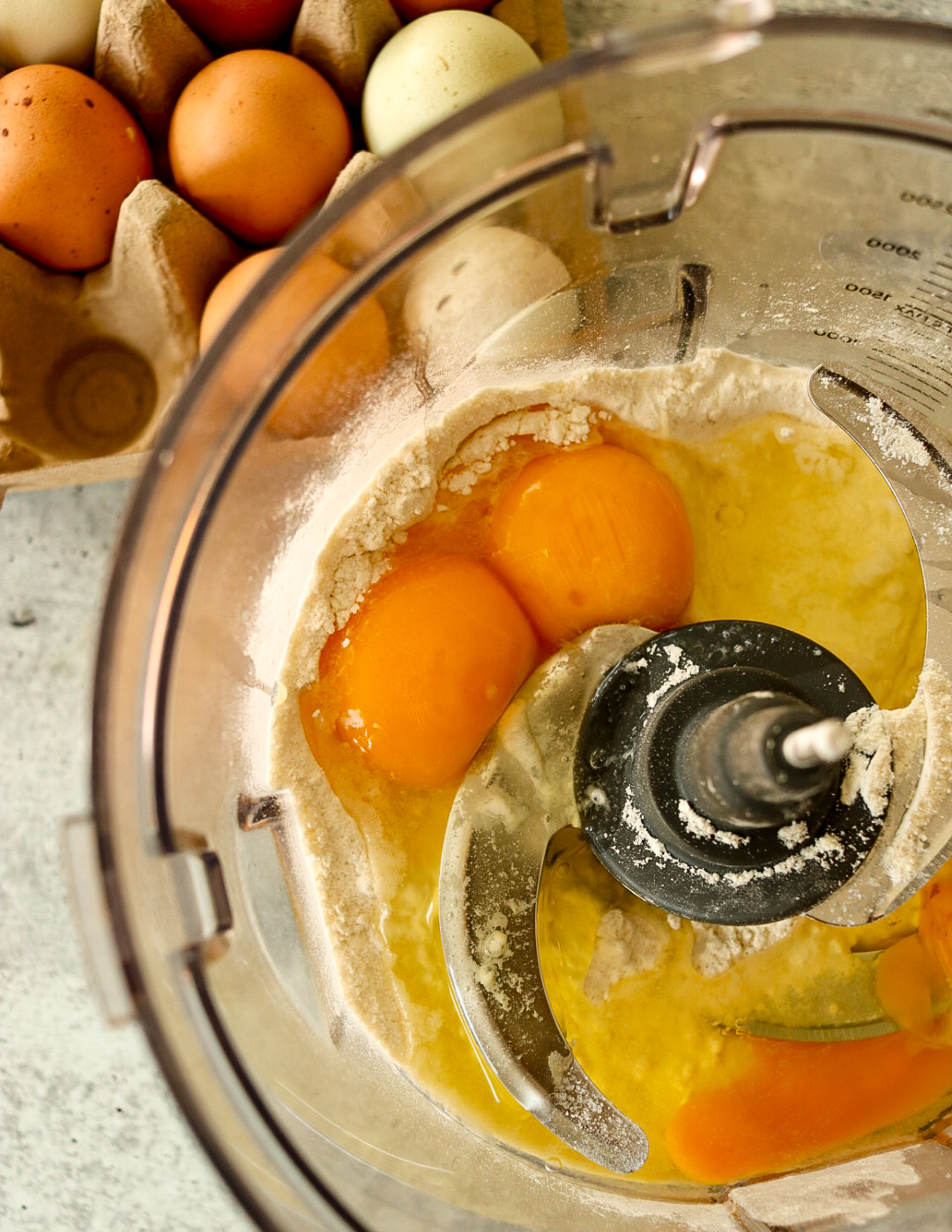
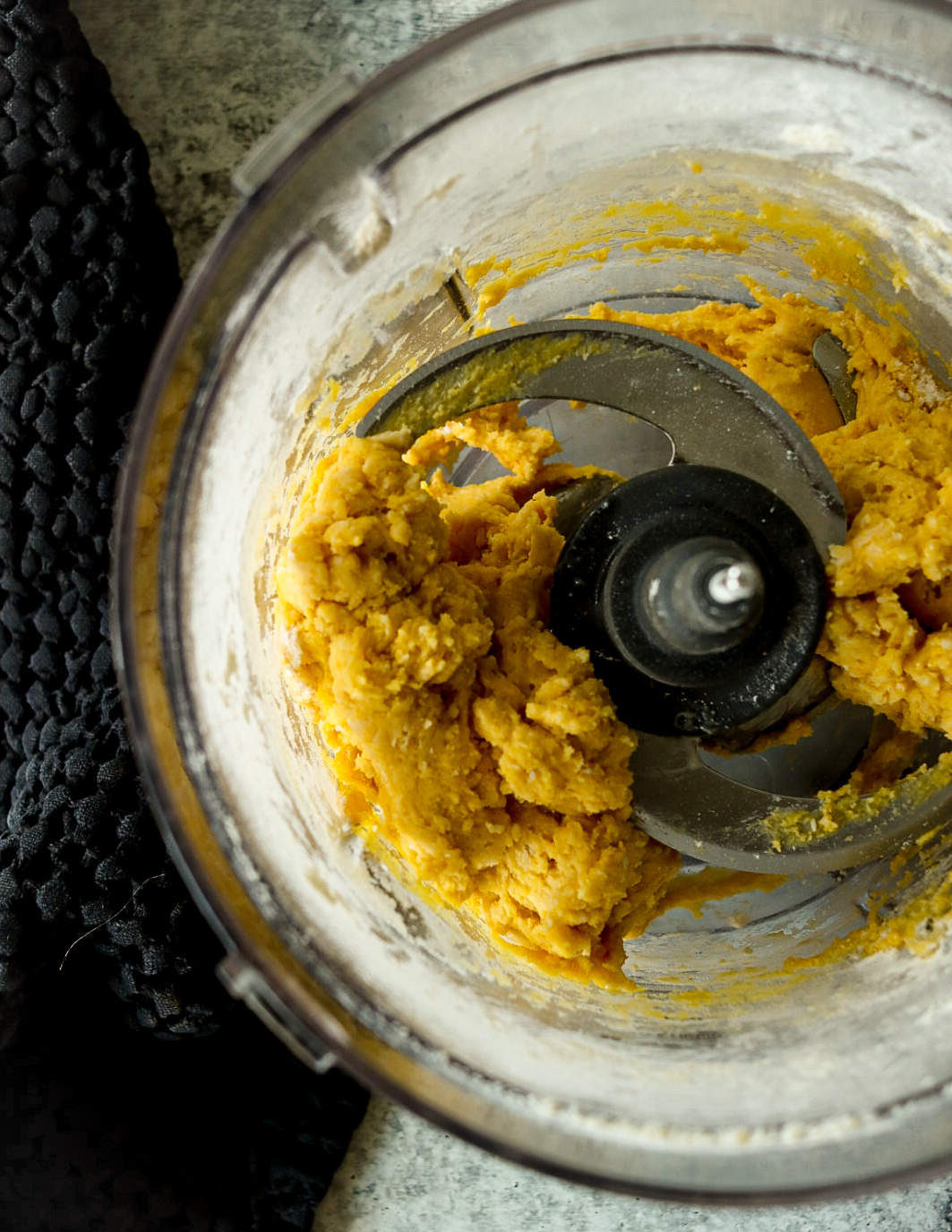
My Recipe is Created for the KitchenAid Pasta Maker.
While you can make pasta by hand, using a KitchenAid pasta maker attachment makes the process much quicker and easier, especially when cooking for a large family. The attachment allows for uniform pasta, and the process becomes a fun activity that can involve the kids, too. The KitchenAid pasta maker ensures that each strand of pasta is perfectly shaped and cooked evenly.
Best Flours for Homemade Pasta:
When making pasta, the type of flour you use can make a big difference. Here are some of the best options:
All-Purpose Flour: This is the most common flour used for pasta and is usually readily available in most pantries. It produces a sturdy, versatile dough that works well for most pasta shapes.
Semolina Flour: Made from durum wheat, semolina flour gives the pasta a slightly coarser texture and a beautiful yellow color. It’s excellent for making traditional Italian pasta.
00 Flour: This finely ground Italian flour creates a silky smooth dough perfect for delicate pasta shapes like tagliatelle and fettuccine. It’s often used in combination with all-purpose flour for the best results.
Pasta Flour Blend: If you prefer a pasta flour blend, Pasta Flour Blend combines the strength of durum, the color of semolina, and the flexibility of all-purpose, making it the ideal base for any pasta recipe.
Key Ingredients for Homemade Pasta:
- Eggs: Eggs are a crucial ingredient in homemade pasta, providing structure, richness, and color to the dough. The eggs' proteins help create a firm yet elastic dough, allowing it to be rolled out thinly without tearing. Additionally, the fat in the egg yolks adds a luxurious texture and flavor, making the pasta tender and delicious.
- Flour: Flour is the foundation of your pasta dough. The type of flour you choose affects the texture and flavor of the pasta. All-purpose flour balances strength and tenderness, while semolina flour adds more chewiness and a lovely yellow hue. Using 00 flour results in a silky smooth dough, perfect for delicate pasta shapes. The gluten in the flour develops during kneading, giving the pasta its necessary elasticity and bite.
- Salt: Salt enhances the pasta dough's flavor, ensuring it isn’t bland. It also helps to strengthen the gluten network, providing a firmer texture to the pasta. A small amount of salt goes a long way in bringing out the natural flavors of the other ingredients.
- Avocado Oil: Avocado oil adds moisture and a subtle richness to the pasta dough. It helps to make the dough more pliable and easier to work with, especially during the rolling process. Additionally, the healthy fats in avocado oil contribute to the pasta's overall flavor and nutritional profile.
- Water is sometimes needed to bring the dough together, especially if the eggs are small or the flour is exceptionally absorbent. It helps to hydrate the flour, allowing the gluten to develop properly. The water needed can vary, so it’s added gradually until the dough reaches the right consistency.
The Importance of Each Ingredient:
When making homemade pasta, each ingredient plays a crucial role in achieving the perfect dough:
- Eggs: Provide structure, richness, and elasticity.
- Flour: Forms the base, with gluten development for texture.
- Salt: Enhances flavor and strengthens the dough.
- Avocado Oil: Adds moisture, richness, and pliability.
- Water: Hydrates the flour for proper gluten development.
Understanding the importance of these ingredients helps you appreciate the art of pasta making and ensures you achieve the best possible results.
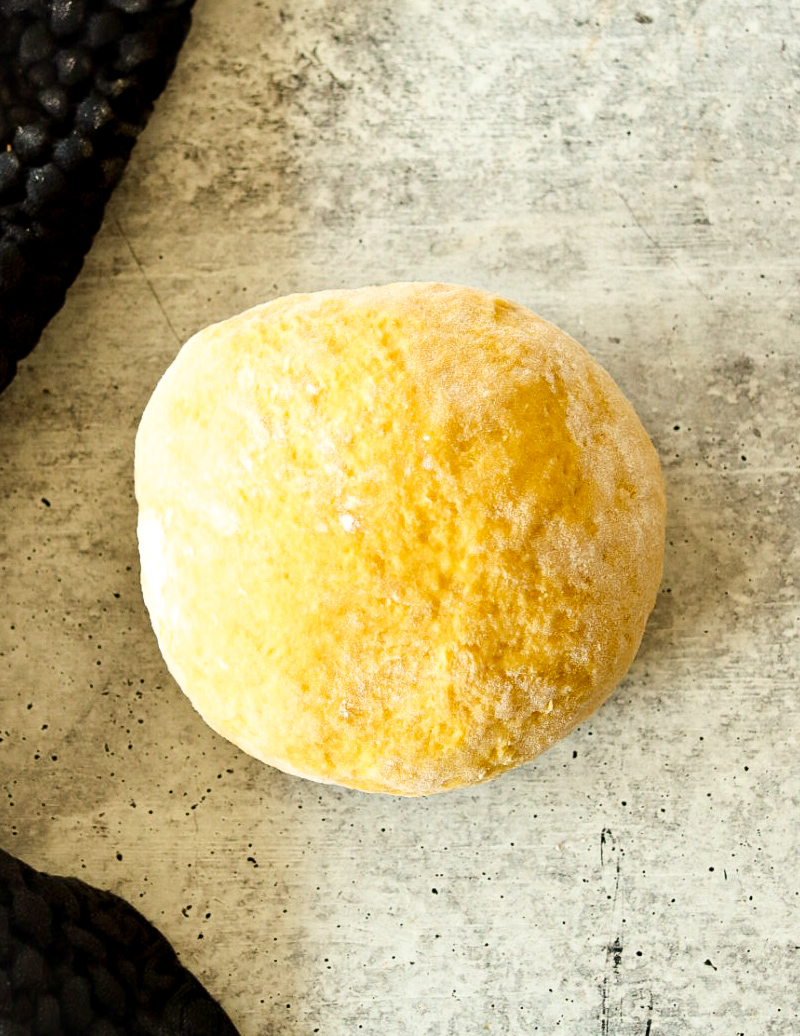
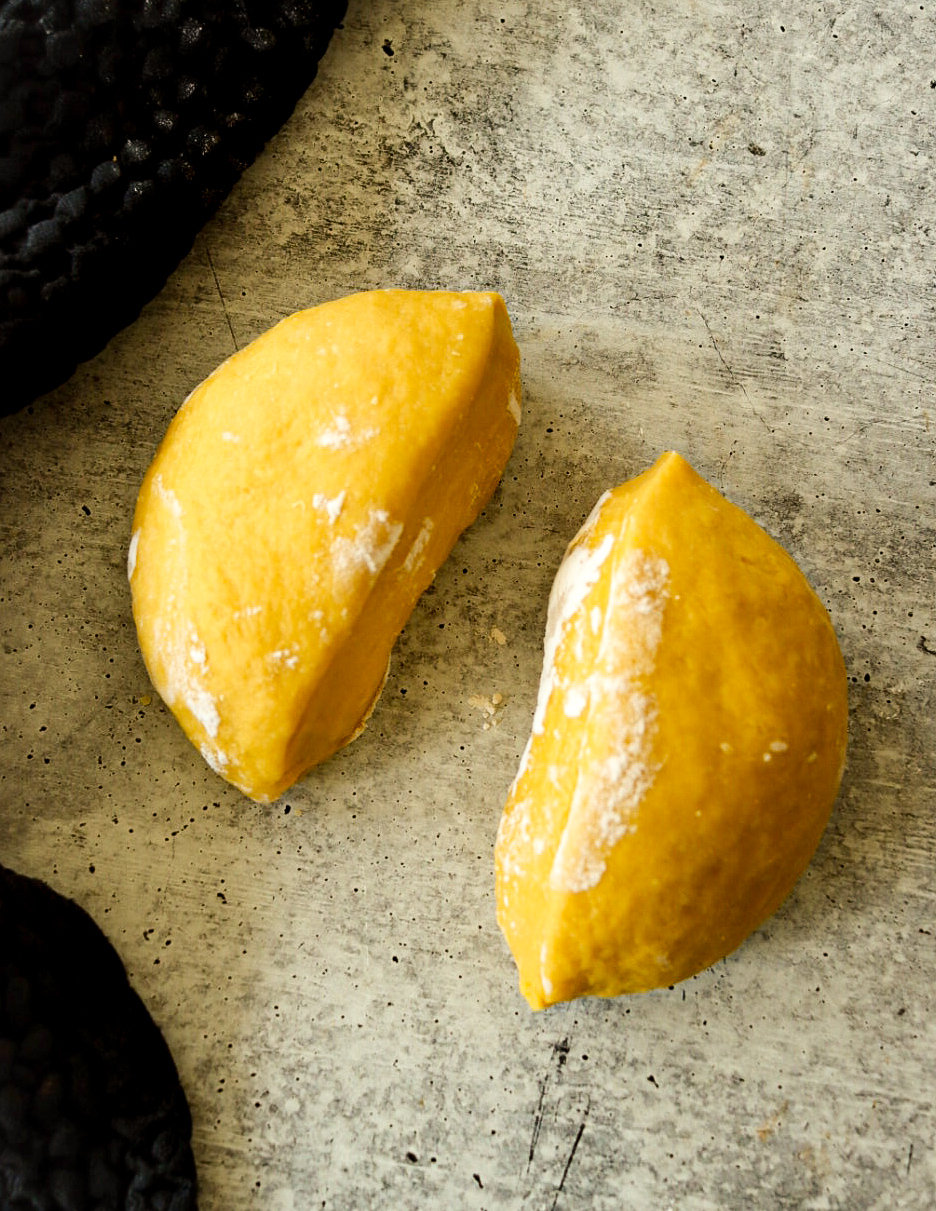
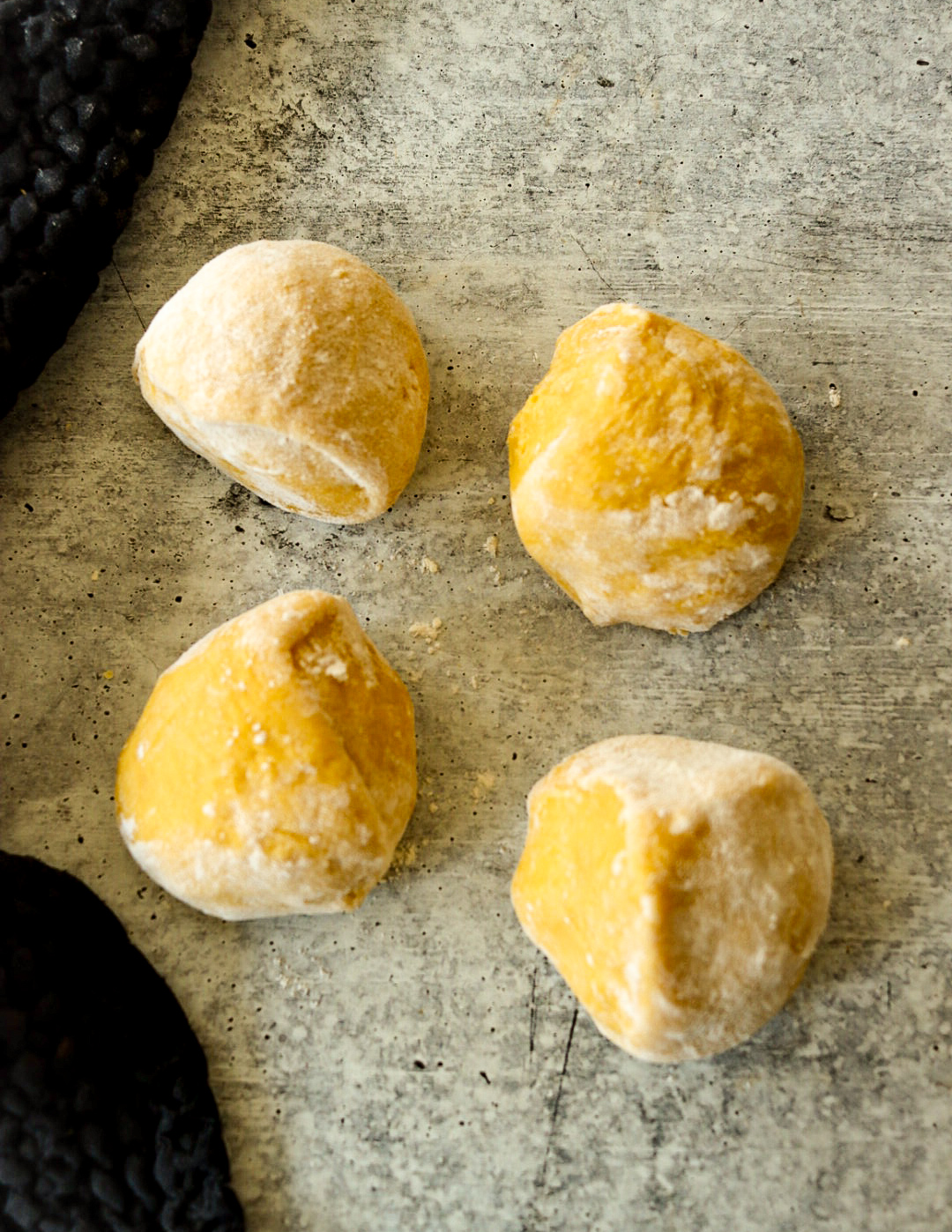
How to Mix the Pasta Dough:
Prepare Your Ingredients: Measure your flour and form it into a mound on a clean work surface. Create a well in the center.
Add Wet Ingredients: Crack the eggs into the well, add the salt, and drizzle in the avocado oil.
Mixing: Using a fork, gently whisk the eggs, gradually incorporating the flour from the edges of the well. As the mixture thickens, use your hands to knead the dough. If the dough is too dry, add a little water, a tablespoon at a time.
Kneading: Knead the dough for about 10 minutes until it becomes smooth and elastic. This step is crucial as it develops the gluten, which gives the pasta its structure.
Resting: Wrap the dough in plastic wrap and let it rest at room temperature for at least 30 minutes. This rest period relaxes the gluten, making it easier to roll out the dough.
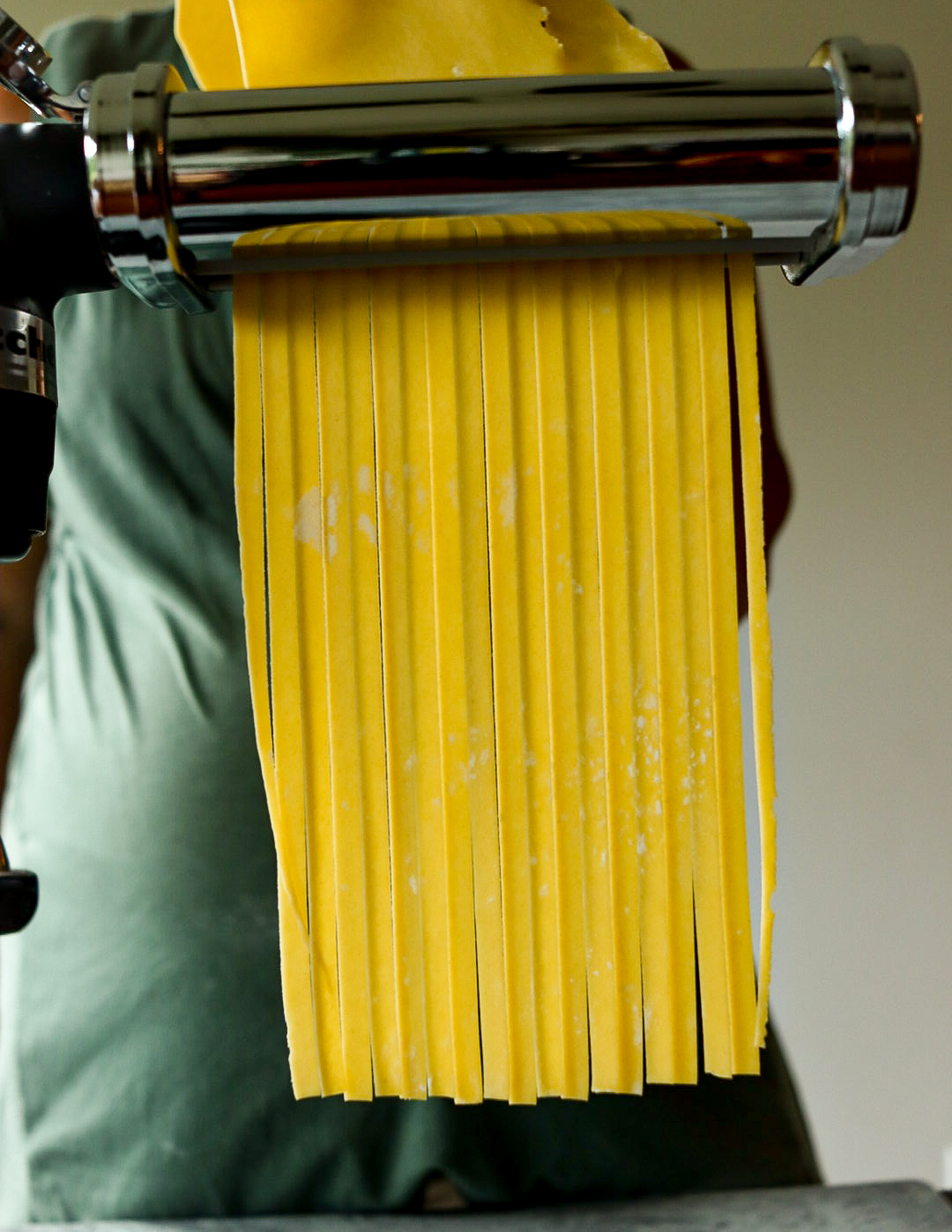
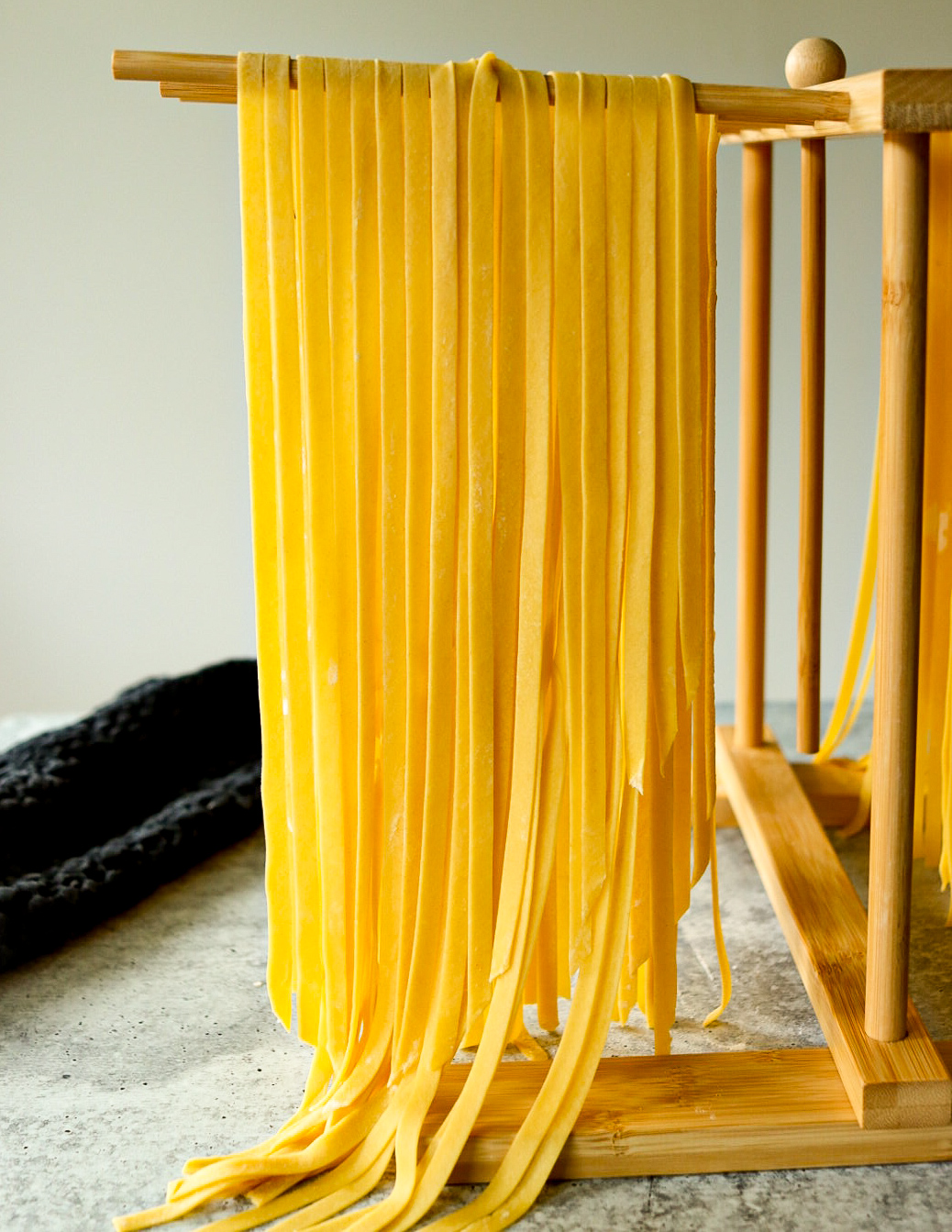
How to Cook Homemade Pasta:
Rolling Out the Dough: Divide the dough into smaller portions. Attach the pasta maker to your KitchenAid mixer and pass the dough through the widest setting a few times, folding it in half each time. Gradually reduce the thickness setting, passing the dough through each setting twice until you reach the desired thickness.
Shaping the Pasta: Once the dough is rolled out, use the appropriate attachment to cut the pasta into your desired shape, such as fettuccine, spaghetti, or lasagna sheets.
Cooking the Pasta: Bring a large pot of salted water to a boil. Add the fresh pasta and cook for 2-3 minutes until it floats to the surface. Fresh pasta cooks much faster than dried pasta, so keep an eye on it to avoid overcooking.
You can learn how to make homemade pasta here.
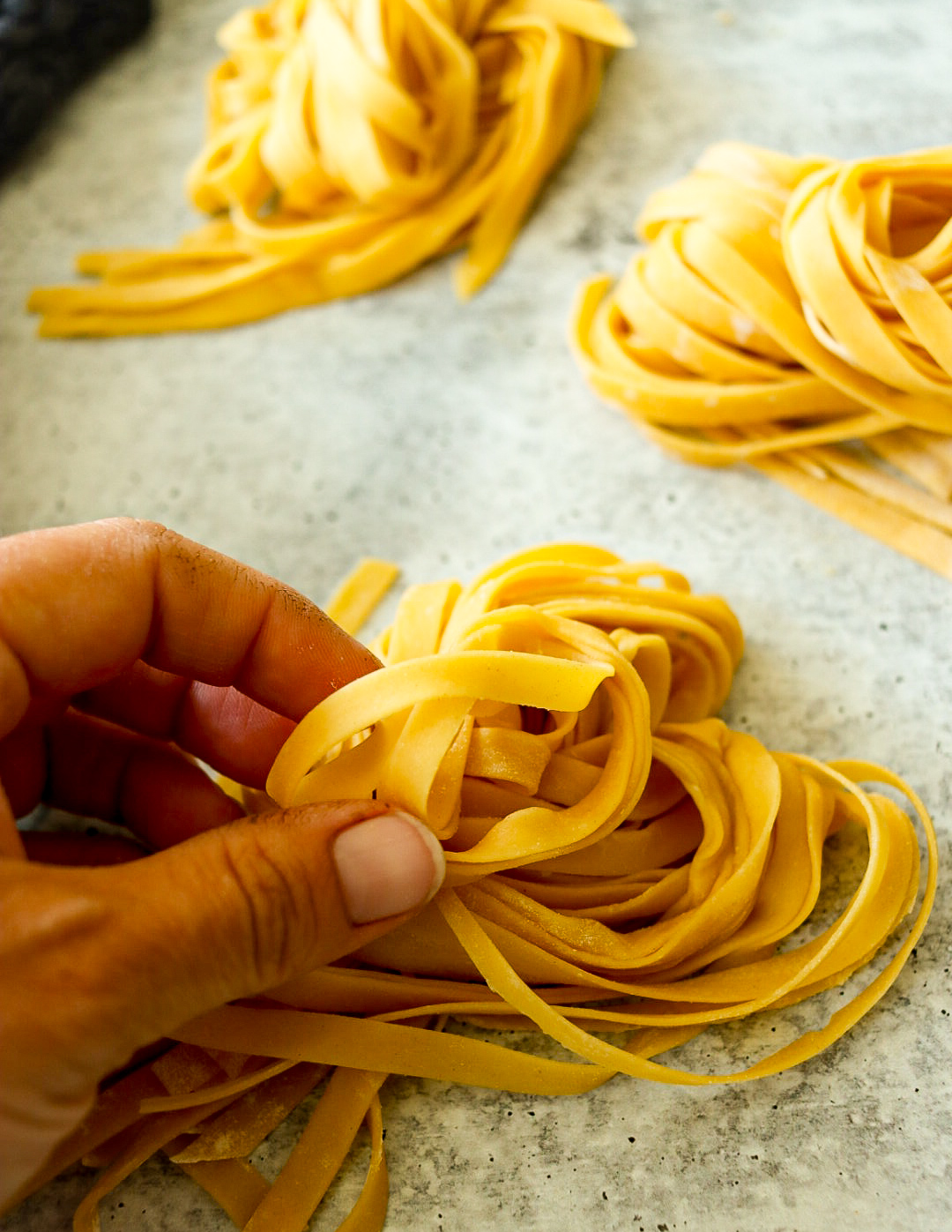
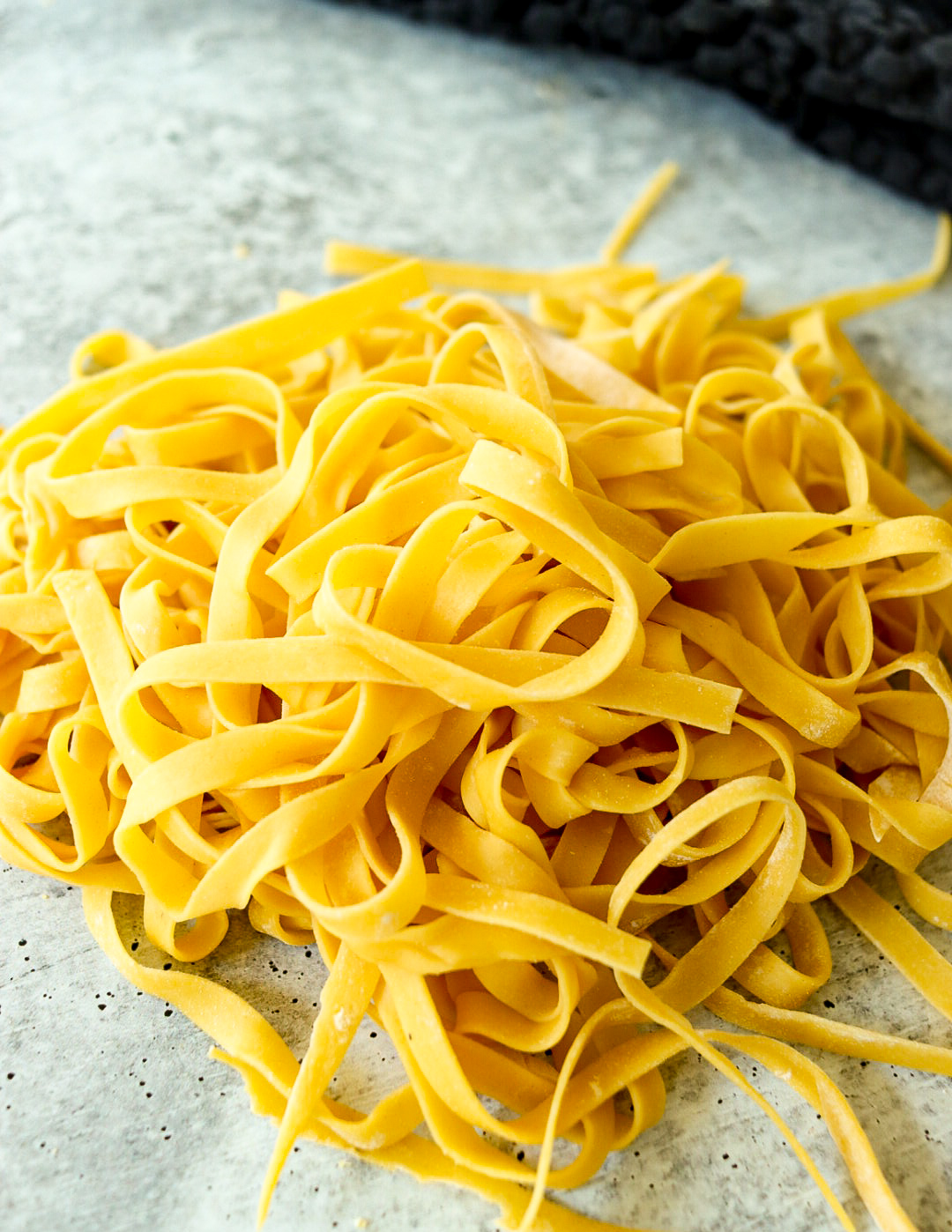
Do I need to dry the pasta, or can you cook it fresh?
You can certainly cook the pasta fresh, with a beautiful, tender texture. However, drying is a great option for storing it for future use. Here’s how you can do it:
Drying: Lay the pasta strands or shapes out on a clean, floured surface or a pasta drying rack. Let them air dry for 24-48 hours, depending on the humidity in your home. Once completely dry, store the pasta in an airtight container.
Freezing: Another option is to freeze the pasta. Arrange the fresh pasta on a baking sheet lined with parchment paper and place it in the freezer. Once frozen, transfer the pasta to a zip-lock bag or airtight container. It can be cooked directly from frozen, adding just a minute or two to the cooking time.
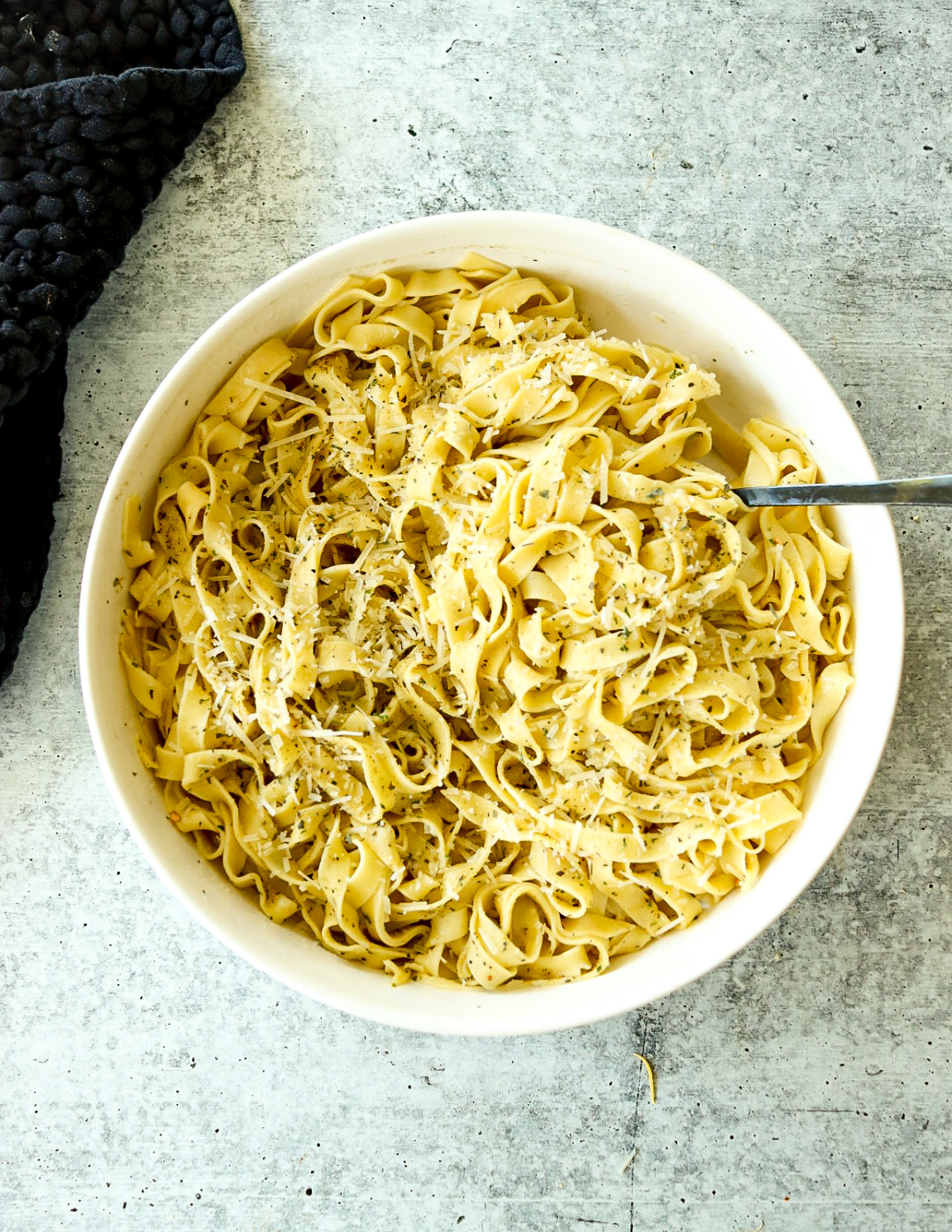
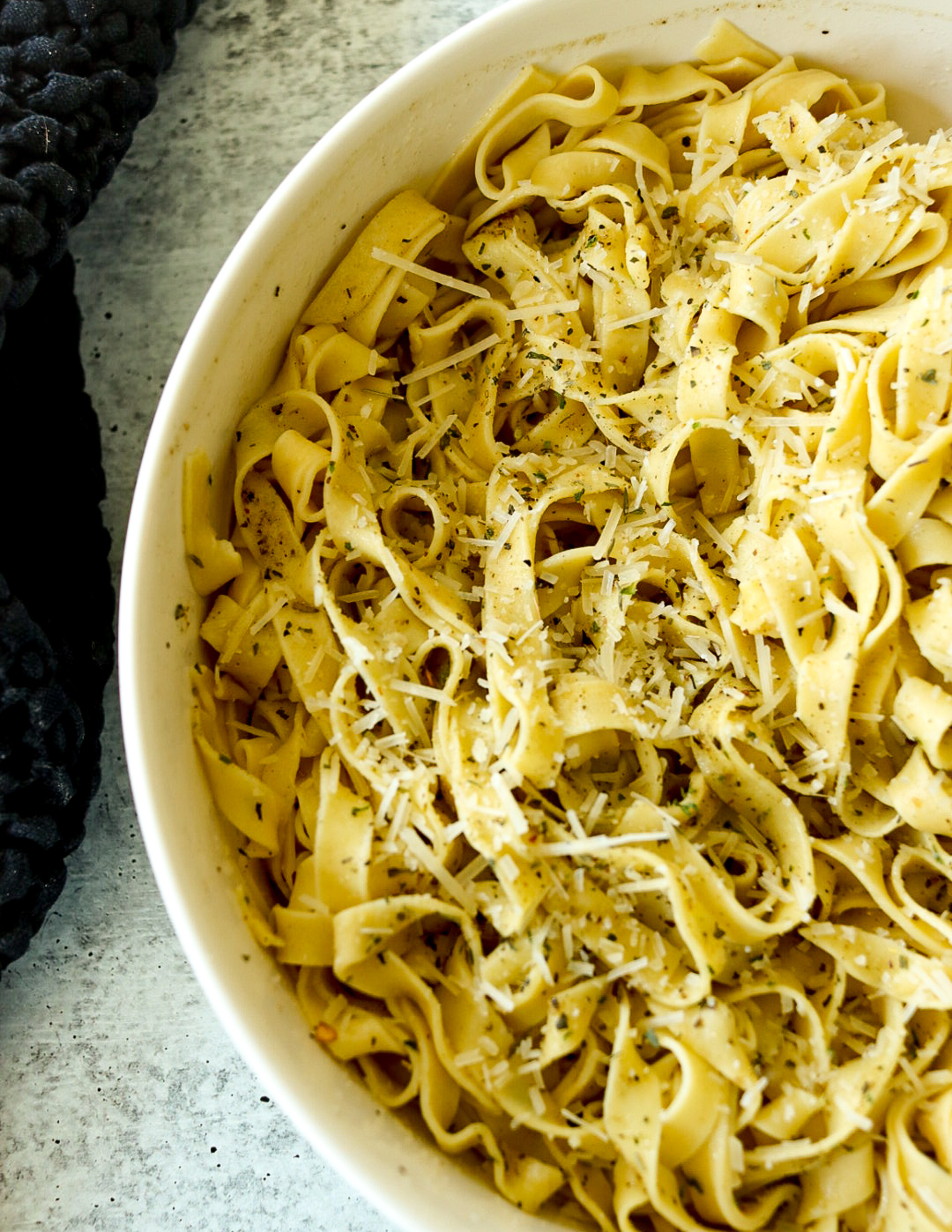
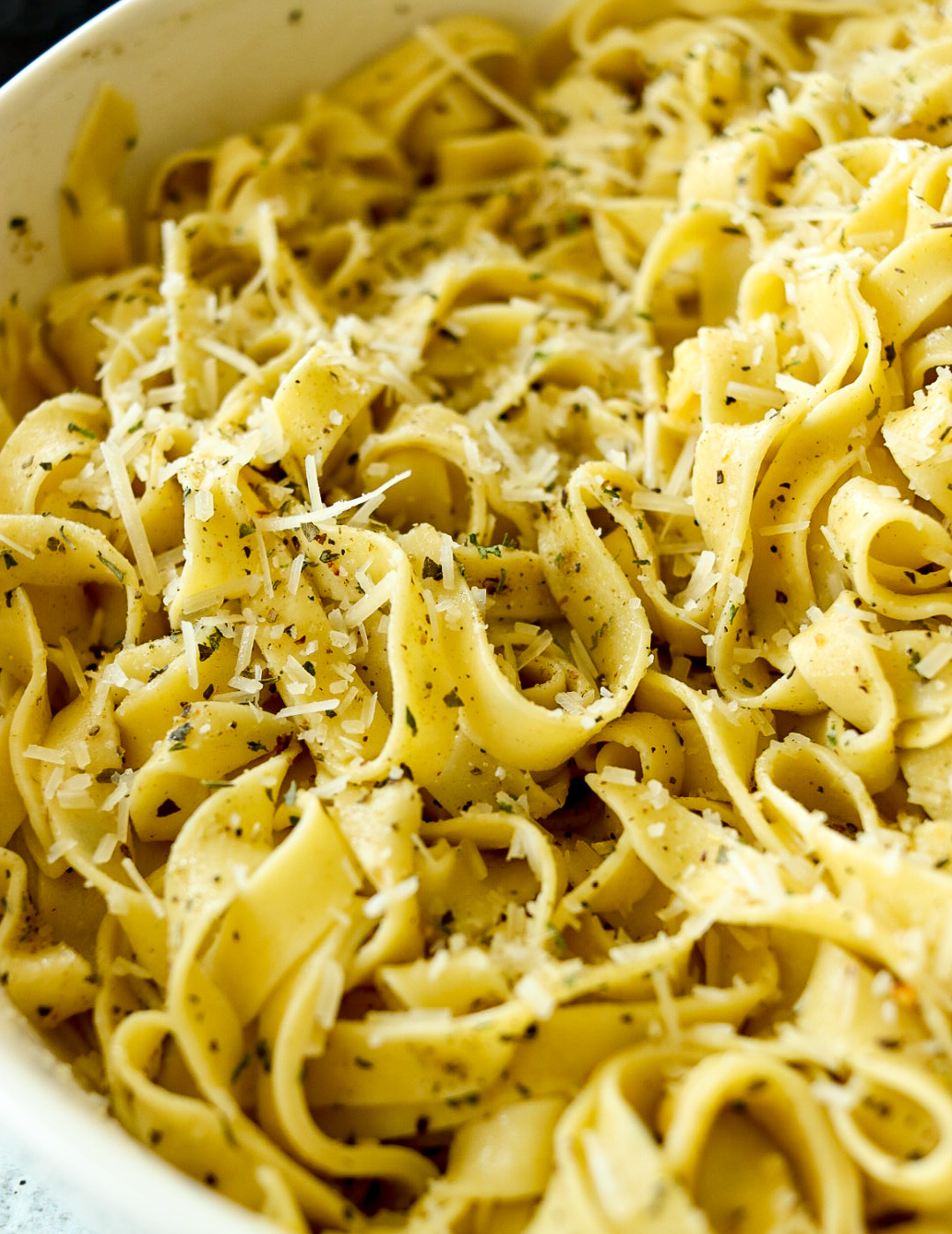
Enjoy Your Homemade Pasta:
I hope you enjoy this back-to-basics recipe for homemade pasta. Did you know making 1 pound of pasta was simple? With just a few pantry staples and a little time, you can create delicious, fresh pasta that will have your family raving. This simple process saves money and ensures you provide wholesome, homemade meals for your loved ones.
Making homemade pasta is a beautiful way to connect with your food and family. It’s a process that brings everyone together, from collecting fresh eggs from the coop to rolling out the dough and enjoying a meal together. Homemade pasta nights are cherished on our homestead with laughter, love, and delicious food. Whether you’re new to bread-making or a seasoned baker, this recipe is a great addition to your repertoire and an excellent way to embrace sustainable living.
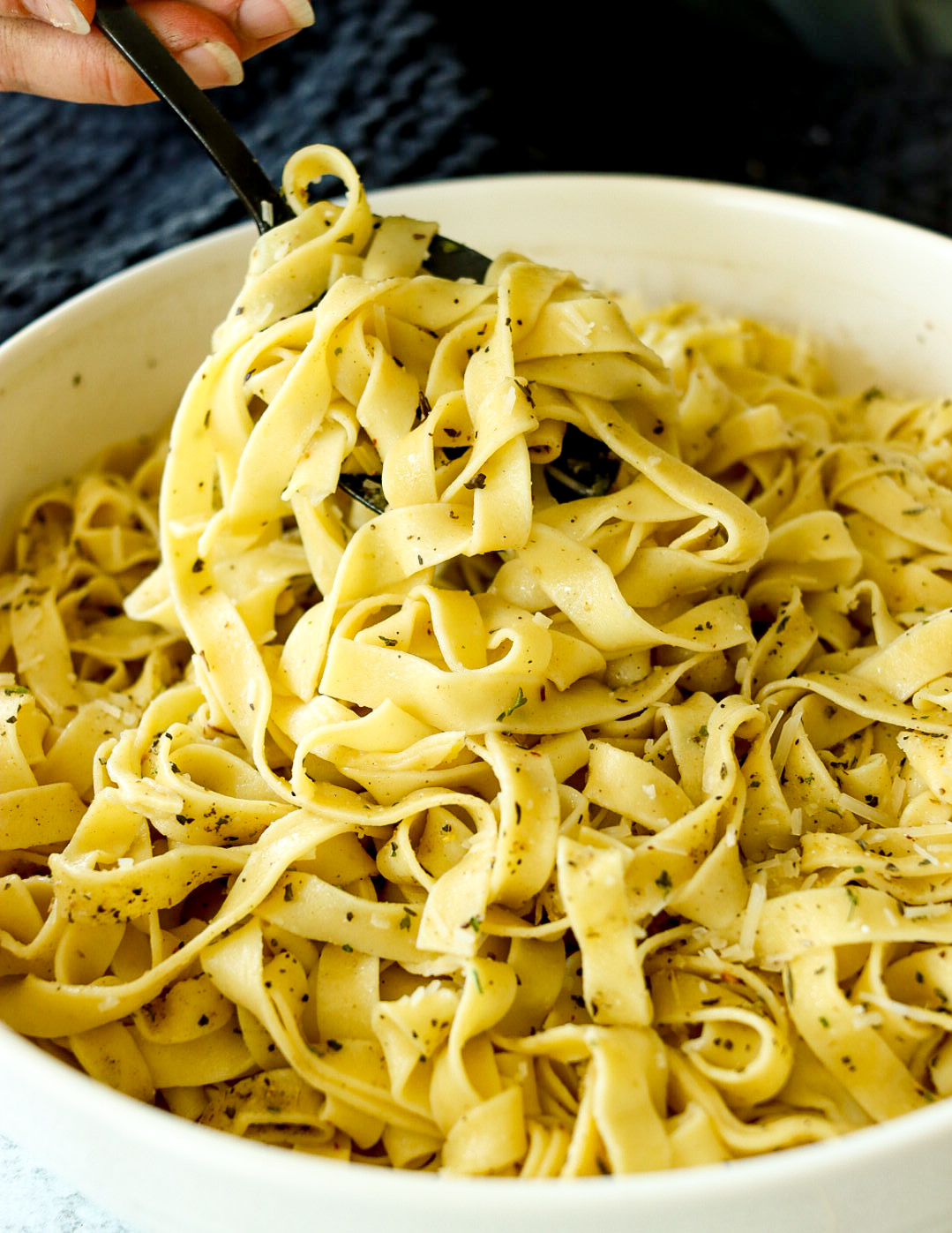
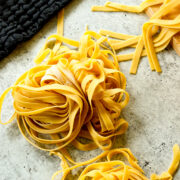
Homemade Pasta Recipe
- Total Time: 0 hours
- Yield: 4 servings
Description
This homemade recipe uses the KitchenAid pasta maker attachment to create fresh, delicious pasta. It is perfect for a variety of dishes, from spaghetti to lasagna.
Ingredients
- 2 ½ cups all-purpose flour (or "00" flour for a finer texture)
- 4 large eggs
- 1 tablespoon olive oil
- ½ teaspoon salt
- Water, as needed
Instructions
To make with Food Processor and KitchenAid Pasta Maker
- Start by adding the flour, salt, eggs, and olive oil to the bowl of a food processor. Use the regular blade to pulse the mixture until the ingredients are combined. If the dough seems too dry, add water a teaspoon at a time until it comes together. If it's too sticky, a little more flour will do the trick. It's that simple!
- Remove the dough from the food processor and knead by hand for about 5-7 minutes until smooth and elastic. Form it into a ball and wrap it in plastic wrap. Let it rest at room temperature for at least 30 minutes.
- Attach the KitchenAid pasta roller to the stand mixer. Divide the dough into four equal pieces. Flatten one piece into a rectangle, and keep the remaining pieces covered with plastic wrap to prevent drying out.
- Set the pasta roller to the widest setting (usually #1). Turn the mixer to speed two and feed the dough through the roller. Fold the dough in half and feed it through again. Repeat this process 5-6 times until the dough is smooth and pliable. Rolling the dough through the roller, gradually reducing the thickness setting (from #1 to your desired thickness, usually #4 or #5 for fettuccine and #6 or #7 for lasagna).
- Once the dough has reached your desired thickness, switch to the desired pasta cutter attachment (e.g., spaghetti or fettuccine). Feed the rolled dough through the cutter to create your pasta. Lay the cut pasta on a floured surface or hang it on a pasta drying rack to dry while you roll and cut the remaining dough.
- Bring a large pot of salted water to a boil. Add the fresh pasta and cook for 2-4 minutes, depending on its thickness and type, until al dente.
- Drain the pasta and toss with your favorite sauce. Serve immediately.
To make without a Food Processor and KitchenAid Pasta Maker
- Start by adding the flour to a flat, solid surface and making a well in the middle to add the eggs, salt, and olive oil to the flour well. Gently use a fork to whisk the egg into the flour ingredients until it makes a sticky dough and combines.
- Knead by hand for about 5-10 minutes until smooth and elastic. Form it into a ball and wrap it in plastic wrap. Let it rest at room temperature for at least 30 minutes.
- Attach the KitchenAid pasta roller to the stand mixer. Divide the dough into four equal pieces. Flatten one piece into a rectangle, and keep the remaining pieces covered with plastic wrap to prevent drying out.
- Set the pasta roller to the widest setting (usually #1). Turn the mixer to speed two and feed the dough through the roller. Fold the dough in half and feed it through again. Repeat this process 5-6 times until the dough is smooth and pliable. Rolling the dough through the roller, gradually reducing the thickness setting (from #1 to your desired thickness, usually #4 or #5 for fettuccine and #6 or #7 for lasagna).
- Once the dough has reached your desired thickness, switch to the desired pasta cutter attachment (e.g., spaghetti or fettuccine). Feed the rolled dough through the cutter to create your pasta. Lay the cut pasta on a floured surface or hang it on a pasta drying rack to dry while you roll and cut the remaining dough.
- Bring a large pot of salted water to a boil. Add the fresh pasta and cook for 2-4 minutes, depending on its thickness and type, until al dente.
- Drain the pasta and toss with your favorite sauce. Serve immediately.
- Prep Time: 30 mins
- Cook Time: 2-4 min
- Category: pasta

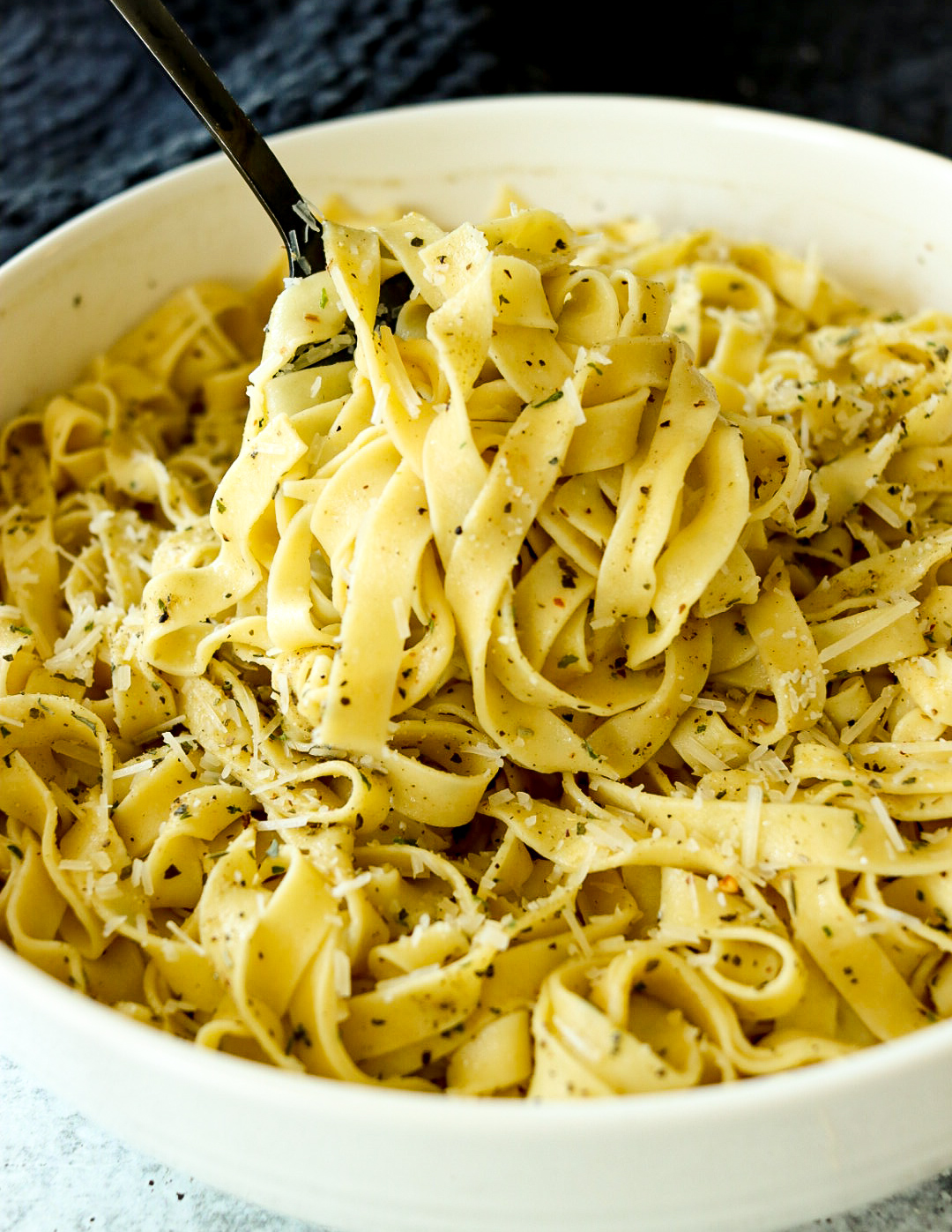
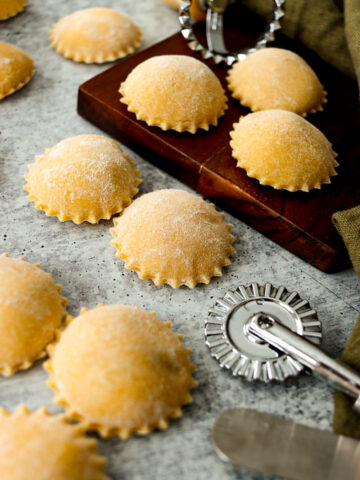
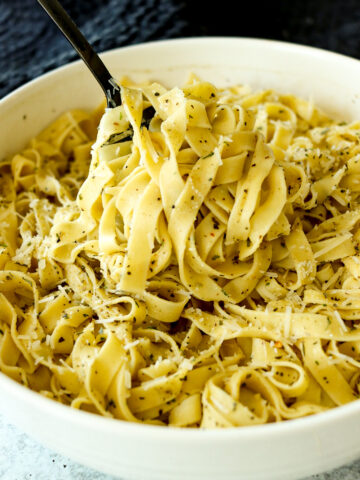
Leave a Reply